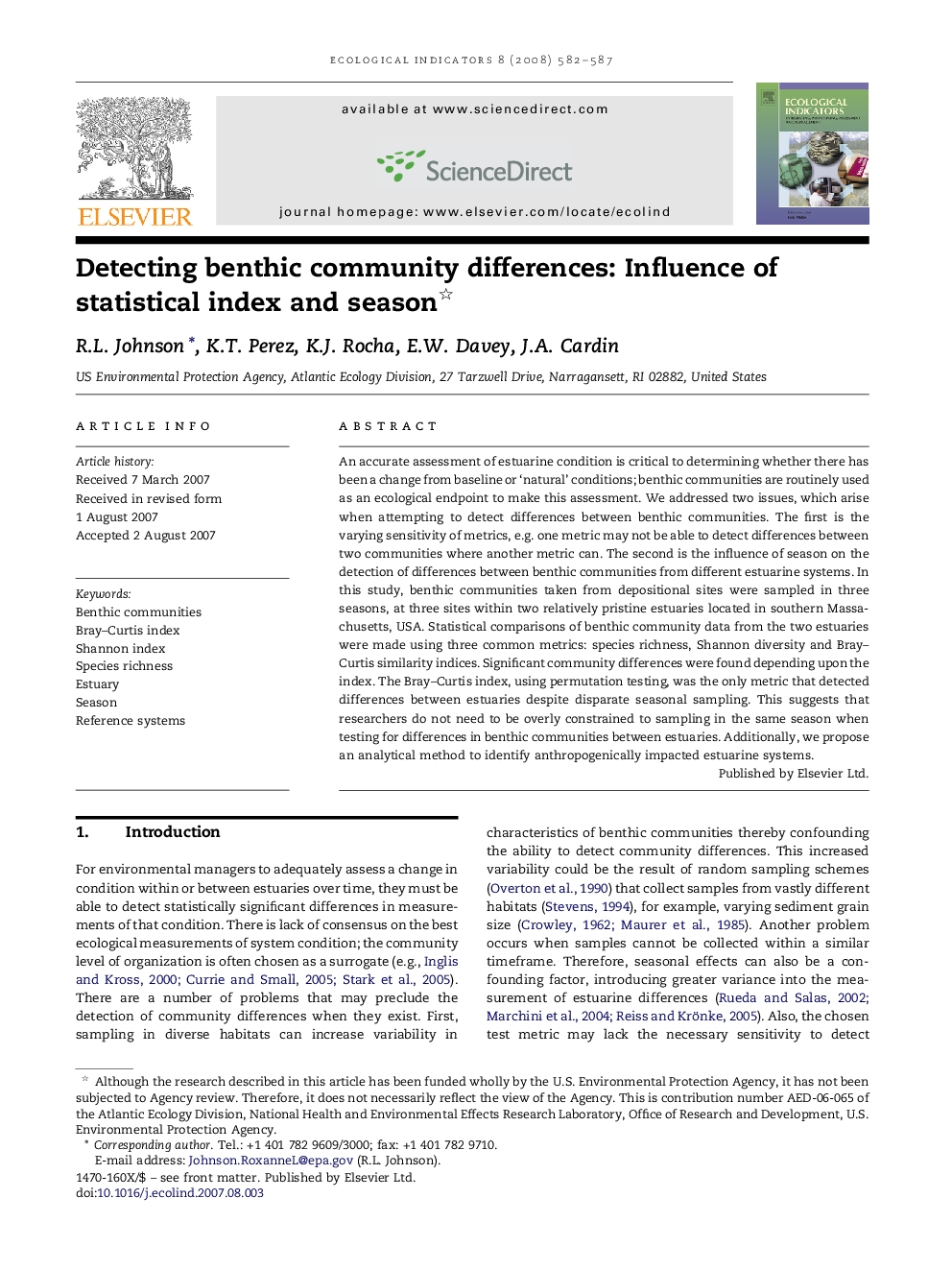| Article ID | Journal | Published Year | Pages | File Type |
|---|---|---|---|---|
| 4374401 | Ecological Indicators | 2008 | 6 Pages |
An accurate assessment of estuarine condition is critical to determining whether there has been a change from baseline or ‘natural’ conditions; benthic communities are routinely used as an ecological endpoint to make this assessment. We addressed two issues, which arise when attempting to detect differences between benthic communities. The first is the varying sensitivity of metrics, e.g. one metric may not be able to detect differences between two communities where another metric can. The second is the influence of season on the detection of differences between benthic communities from different estuarine systems. In this study, benthic communities taken from depositional sites were sampled in three seasons, at three sites within two relatively pristine estuaries located in southern Massachusetts, USA. Statistical comparisons of benthic community data from the two estuaries were made using three common metrics: species richness, Shannon diversity and Bray–Curtis similarity indices. Significant community differences were found depending upon the index. The Bray–Curtis index, using permutation testing, was the only metric that detected differences between estuaries despite disparate seasonal sampling. This suggests that researchers do not need to be overly constrained to sampling in the same season when testing for differences in benthic communities between estuaries. Additionally, we propose an analytical method to identify anthropogenically impacted estuarine systems.
